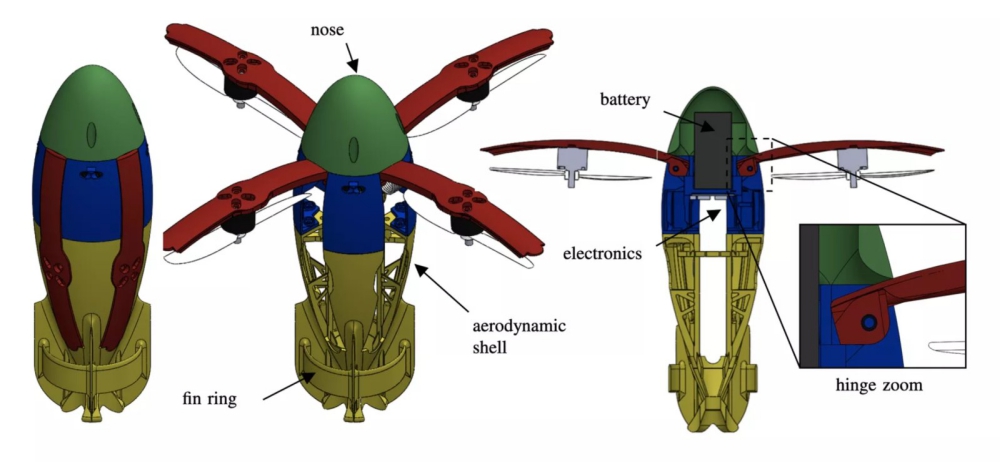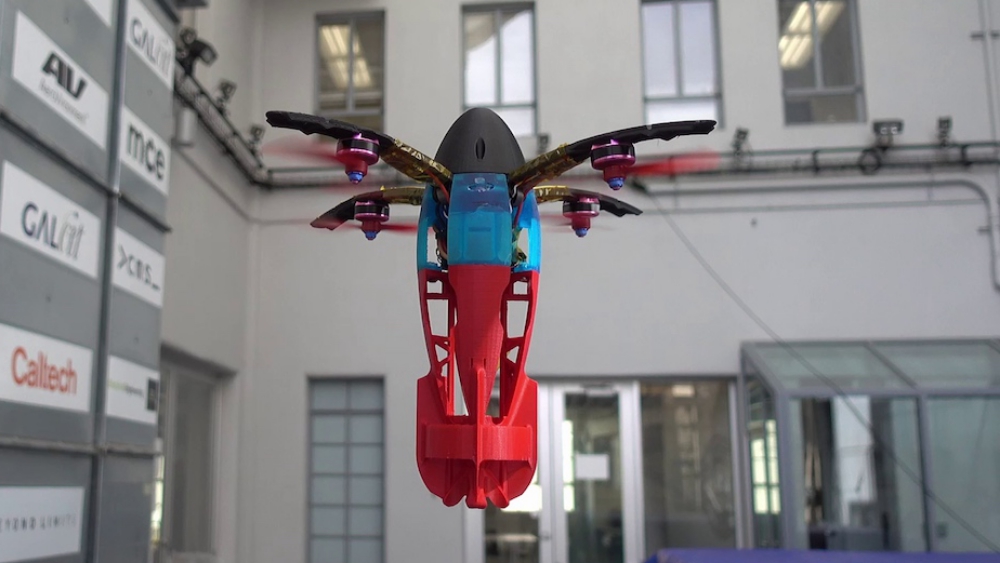At IROS in Macau earlier this month, researchers from Caltech and NASA’s Jet Propulsion Laboratory (JPL) presented a prototype for a ballistically launched drone—a football-shaped foldable quadrotor that gets fired out of a cannon, unfolds itself, and then flies off.
Test launching the SQUID (Streamlined Quick Unfolding Investigation Drone) from a truck as shown in the video effectively demonstrates why this is more than a novelty: It would otherwise be very difficult to conventionally launch a quadrotor from a vehicle moving that fast. You can imagine how useful this would be for first responders, ships dealing with waves, or even other aircraft in flight.
The prototype SQUID shown here weighs 530 grams and is about 27 centimeters long. Folded up, it’s just over 8 cm in diameter. SQUID gets its initial boost of 15 meters per second (referred to as “muzzle velocity” in the paper) from a pneumatic baseball pitching machine, which gives the drone an apex of about 10 m. Immediately after the drone exits the launcher, a nichrome wire heats up and burns through a monofilament line holding the arms in place. Driven by springs, the arms snap out in just 70 ms, while the aerodynamic body of the drone passively orients it into the airstream.

A CAD model of the SQUID system showing (from left): ballistic configuration, multirotor configuration, and section view with a closer look of a hinge
As soon as the motors spin up (after about 200 ms), SQUID automatically orients itself into a hovering attitude, and it can be controlled just like a normal quadrotor within less than 1 second of launch. Landing is a bit of a challenge, although apparently “it can safely land if the bottom touches the ground first at a low speed,” after which it’ll gently topple over.
SQUID’s design is easily scalable, and the researchers are currently working on both smaller (2-inch diameter) and larger (6-inch diameter) prototypes. The 6-inch SQUID would be large enough to carry a battery and payload enabling significantly more autonomy, including vision-based ballistic stabilization.
Source: IEEE Spectrum

